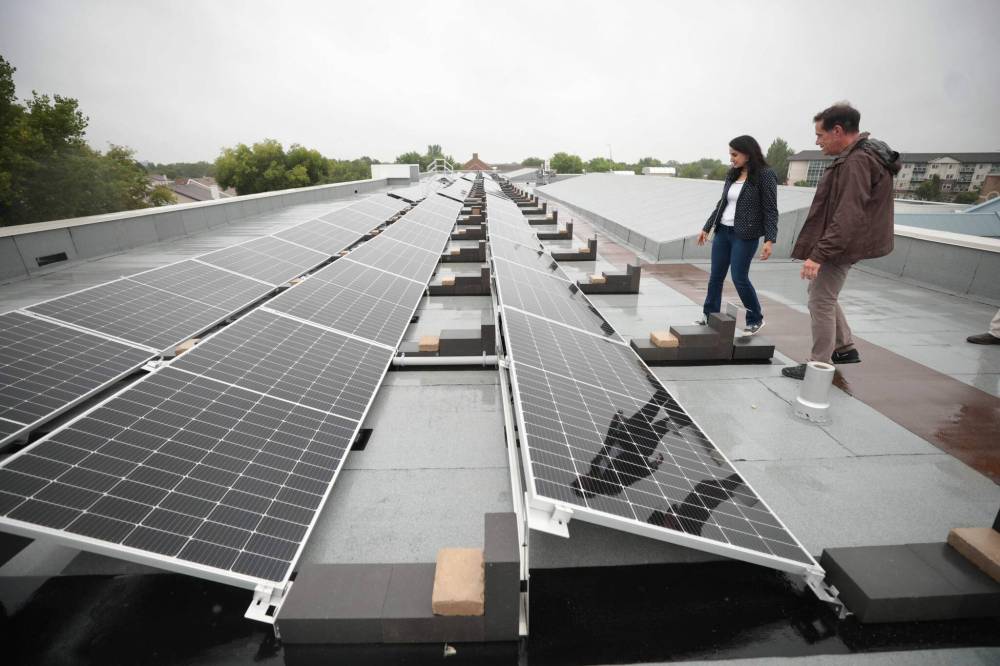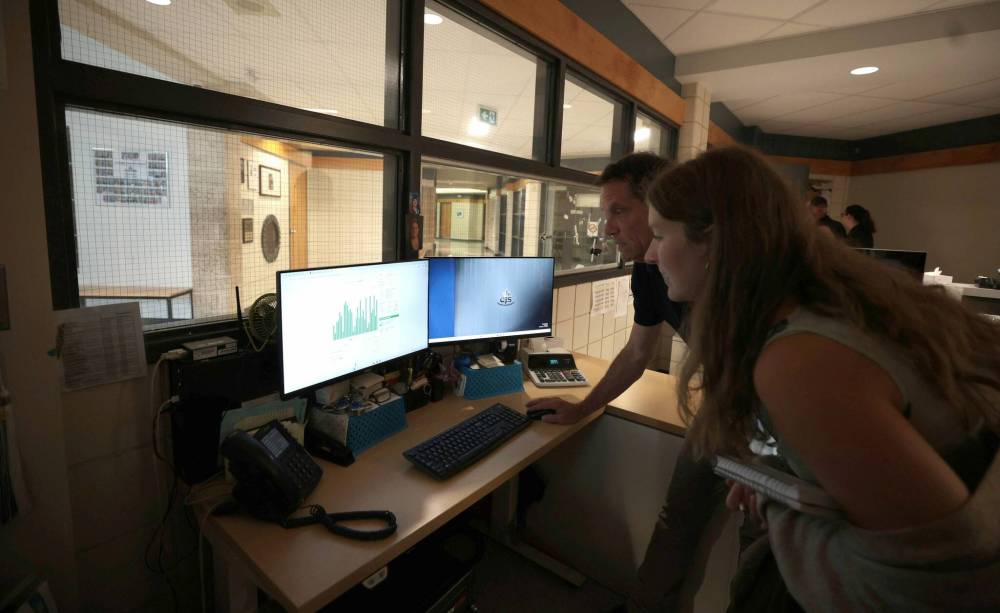Solar panels reducing high school’s carbon footprint
Advertisement
Read this article for free:
or
Already have an account? Log in here »
To continue reading, please subscribe:
Monthly Digital Subscription
$0 for the first 4 weeks*
- Enjoy unlimited reading on winnipegfreepress.com
- Read the E-Edition, our digital replica newspaper
- Access News Break, our award-winning app
- Play interactive puzzles
*No charge for 4 weeks then price increases to the regular rate of $19.00 plus GST every four weeks. Offer available to new and qualified returning subscribers only. Cancel any time.
Monthly Digital Subscription
$4.75/week*
- Enjoy unlimited reading on winnipegfreepress.com
- Read the E-Edition, our digital replica newspaper
- Access News Break, our award-winning app
- Play interactive puzzles
*Billed as $19 plus GST every four weeks. Cancel any time.
To continue reading, please subscribe:
Add Free Press access to your Brandon Sun subscription for only an additional
$1 for the first 4 weeks*
*Your next subscription payment will increase by $1.00 and you will be charged $16.99 plus GST for four weeks. After four weeks, your payment will increase to $23.99 plus GST every four weeks.
Read unlimited articles for free today:
or
Already have an account? Log in here »
Hey there, time traveller!
This article was published 19/08/2024 (473 days ago), so information in it may no longer be current.
A St. Vital high school is reducing its carbon footprint with 88 solar panels — the largest renewable energy infrastructure project of its kind in Manitoba.
The Louis Riel School Division is finding energy savings via new hardware that was installed on the roof of Collège Jeanne-Sauvé during the 2023-24 school year.
“These types of things should be a no-brainer,” said former principal Alain Michalik, who oversaw the project before retiring in the spring after 12 years at the helm of the Grade 9-12 school at 1128 Dakota St.

RUTH BONNEVILLE / FREE PRESS
Former principal Alain Michalik (right) and Amarbeer Bhandari, director of facilities, maintenance and transportation, stand on the rooftop of Collège Jeanne-Sauvé looking at the long line of solar panels.
The province approved $91,000 in funding for solar panels as part of a larger, $12.8-million construction and renovation project to address growing enrolment at the French immersion school.
The panels are powering the addition of 16 classrooms and a music room — roughly 17 per cent of the high school’s total energy costs. Excess energy is being returned to the Manitoba Hydro grid.
Michalik said teachers will be able to draw on the school office’s dashboard of live energy-production levels for lessons in mathematics, science and other subjects.
The photovoltaic sunlight-conversion system has saved upwards of 12,209 kilograms of CO2 emissions since it was installed in late November.
June 30 marked the SolarEdge system’s most productive day, to date. A total of 307.69 kilowatt-hours of power were generated in those 24 hours alone.
“We’re putting into action what our beliefs are at the school and school division level,” said Michalik, whose brother is Christian Michalik, superintendent of LRSD.
Those beliefs include protecting the natural environment and teaching students what it means to be responsible citizens, the retiree said.
An architect summary for LRSD states generating renewable energy onsite will both allow the school to reduce its reliance on the grid and the amount of wasted energy lost in transmission.
“(This) offers some protection against the potential for future energy price increases,” states the brief by Number Ten Architectural Group.
Number Ten estimates annual energy savings will be the equivalent of the yearly consumption of 4.4 households, taking 3.7 passenger vehicles off the road, consuming about 29 barrels of oil or using 452 tanks of propane for home barbecues.
Solar may not be “a catch-all for energy independence,” but it helps with overall energy mixes and immediately makes buildings more sustainable, said Alexander Lavoie, chairman of the Manitoba Sustainable Energy Association.

RUTH BONNEVILLE / FREE PRESS
Alain Michalik shows Free Press reporter Maggie Macintosh the control centre software program that creates data sheets on the progress of the solar panels.
“If (energy production) is more localized, they can utilize it as soon as it’s created — that’s wonderful,” said Lavoie, who called the first-of-its-kind school pilot “a step in the right direction.”
LRSD wants to capture “all of the environmentally responsible ways” of running its 40 schools, said Amarbeer Bhandari, director of facilities, maintenance and transportation.
A cistern was installed at Collège Jeanne-Sauvé to capture and filter water from rain and snow storms to operate washrooms. The school’s parking lot will also soon be equipped with an electric vehicle charger.
Bhandari said the division will consider incorporating solar panels into future additions, but older roofs often prove challenging because of weight limitations.
She called on the government to update school-construction guidelines and require all new buildings to incorporate solar panels.
Winnipeg ranks sixth among the sunniest overall cities in Canada, according to WeatherStats, a website that analyzes real-time data from Environment and Climate Change Canada.
The Manitoba capital records roughly 2,371 hours of sunshine every year.
maggie.macintosh@freepress.mb.ca

Maggie Macintosh
Education reporter
Maggie Macintosh reports on education for the Free Press. Originally from Hamilton, Ont., she first reported for the Free Press in 2017. Read more about Maggie.
Funding for the Free Press education reporter comes from the Government of Canada through the Local Journalism Initiative.
Every piece of reporting Maggie produces is reviewed by an editing team before it is posted online or published in print — part of the Free Press‘s tradition, since 1872, of producing reliable independent journalism. Read more about Free Press’s history and mandate, and learn how our newsroom operates.
Our newsroom depends on a growing audience of readers to power our journalism. If you are not a paid reader, please consider becoming a subscriber.
Our newsroom depends on its audience of readers to power our journalism. Thank you for your support.
History
Updated on Monday, August 19, 2024 8:58 AM CDT: Corrects reference to gigawatt-hours to kilowatt-hours


